Tour GuidesGuides
Private ToursTours
Private Car ToursCars
Virtual ToursVirtual
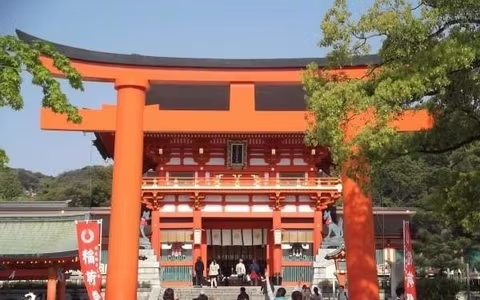
Tour of Fushimi-Inari-Taisya Shrine
Kyoto
3 hours
(History of the shrine) Fushimi-Inari-Taisha Shrine was founded when the god Inari was enshrined on Mt. Inariyama in February, 711. It celebrated the 1300th anniversary of the god`s enshrinement and all the buildings in the ground were restored and re-painted with the vermilion color in 2011. (Highlights) Fushimi-Inari-Taisya Shrine is the "So-honzan" head shrine of 30,000 Inari shrines across the country. There are paths called "sen-bon-torii", meaning alleys of tunnels made of 1,000 torii gates. Actually, however, it is said there are a total of more than 10, 000 torii gates, large and small, in the shrine compound which includes the whole of Mt. Inariyama. You can reach the 233-meter-high top of the mountain, or rather a hill, going up the paths, but it will be a laborious, 1.5-hour walk amid the rich greenery. In the meantime, it is the guardian shrine of merchants and tradesmen, attracting millions of visitors in the New-Year period. A pair of foxes sitting at the base of the gates are regarded as the messenger of the god. (How to enjoy) Go through the huge torii gate and walk along the paved main road and you will be met by the huge main shrine building. Then, walk on unpaved narrow paths which are inside the tunnel of torii gates according to the instructions of the signboard. There are many vermilion-colored buildings on your way, souvenir shops and smaller structures selling charms. You can sit on the sides of the paths and enjoy chatting with your companions or have lunch. There are some places which commnd a fine view of the city of Kyoto. (Others) The JR fare is 140 yen one way from JR Kyoto station. No entrance fee is required (although you are expected to offer whatever amount of monetary donations at the mainn building). Also you are supposed to follow the tradition, including clapping your hands twice when you worship.
FROM$107/ per group
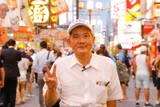
Tatsuhiro N.
4.56 / 5
(62 reviews)
![[Anekouji street] Hanging around east-west street in Kyotocover image](https://gowithguide.com/images/UPssLICAVl-_1jQOgKJdi5z6dCRrc7YTDEbk5dwTwog/f:avif/h:480/w:480/plain/gowithguide/tours/4807/82401.jpg)
[Anekouji street] Hanging around east-west street in Kyoto
Kyoto
5 hours
There are many old streets in old capital Kyoto area. I design a walking tour set of 31 streets.You can see the true Kyoto in this tour which is not in current tourism. It is like Kyoto 30 years ago.In some streets, You could see traditional dying shops for Yuzen which is a traditional dyeing method of Kyoto.You can visit some of the shops and I will interpret between the shop owner and you.
FROM$162/ per group

Yoshiharu K.
4.72 / 5
(57 reviews)

Winter holiday's in Jerusalem lights and food
Jerusalem
3 hours 30 min
Hanukkah and Christmas overlap this year, so I will be doing an evening tour to see the Christmas lights and the lighting of the Hanukkah menorah in Jerusalem, and to try some local treats. This only applies for December 25th.
FROM$150/ per group

Melissa P.
4.00 / 5
(1 reviews)
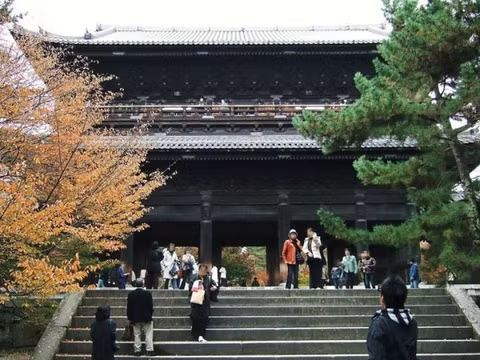
Autumn Tints Tour along Higashiyama Area with Extra Garden
Kyoto
5 hours
It is a time to enjoy the Autumn leaves. Let's visit Nanzenji Temple, Eikando Temple, Ginkakuji Temple and garden along the Philosopher's Path and realize the colour combination of Japanese Maple Tints, from green, Yellow, Orange, Red to dark colour.
FROM$228/ per group

Eric T.
4.88 / 5
(52 reviews)
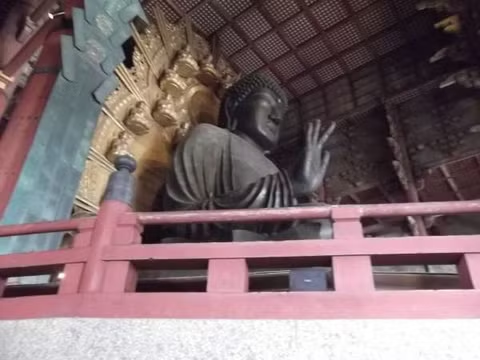
Tour of the Great Buddha of Nara
Nara
4 hours
(Highlights) The Great Buddha of Nara is a magnificent structure weighing some 500 tons. Originally built in 752 AD, the stature is 15.9 meters high excluding the pedestal and its face 4.8 meters long. Subsequently, it was damaged by natural disasasters, fires and wars and was repaired several times. It was completely rebuilt in the Edo period (1603-1867). You will be amazed at the splendid image of the Great Buddha calmly seated on the pedestal with the look of a perfect repose and passionless calm. His right hand shows mercy and left hand, the wisdom of the universe. The building housing this huge image, The Great Buddha Hall of Todaiji Temple, is the largest existing wooden structure in the world, having an area of 54 meters by 49 meters and a height of 45 meters. It was burned down by a fire twice, but was rebuilt in the Edo period. (How to enjoy) You will be amazed at how huge the Buddha image is. Immerse yourself in the solemn atmosphere it creates amid the odor of burning incense, wonder at the ancient technology and the wisdom and the devotion of people. After all, you will never end up not being deeply impressed with the aura the "Daibutsu-sama" Great Buddha emits. Everywhere around the Great Buddha Hall, in the meantime, you can enjoy mixing with tame deer which do you no harm but ask you for food, "shika-sembei", which is being sold at the nearby stalls for 150 yen a pack containing some 50 grams of the deer food. You will feel very happy feeding, stroking and hugging the cute animal whose number exceeds, perhaps, 100. (Others) The transportation fare between Kyoto and Nara on a Kintetsu train is 620 yen (plus 510 yen if you take a limited express train). The entrance fee to Todaiji temple is 600 yen.
FROM$107/ per group

Tatsuhiro N.
4.56 / 5
(62 reviews)
![[Matubara street] Hanging around east-west street in Kyotocover image](https://gowithguide.com/images/8pQXuBJuKBneBq_Va_PoFXuHM8ITDmOBiEazcaC-7Ig/f:avif/h:480/w:480/plain/gowithguide/tours/4892/83721.jpg)
[Matubara street] Hanging around east-west street in Kyoto
Kyoto
5 hours
There are many old streets in old capital Kyoto area. I design a walking tour set of 31 streets.You can see the true Kyoto in this tour which is not in current tourism. It is like Kyoto of 30 years ago.In some streets, You could see traditional dying shops for Yuzen which is a traditional dyeing method of Kyoto.You can visit some of the shops and I will interpret between the shop owner and you.
FROM$162/ per group

Yoshiharu K.
4.72 / 5
(57 reviews)
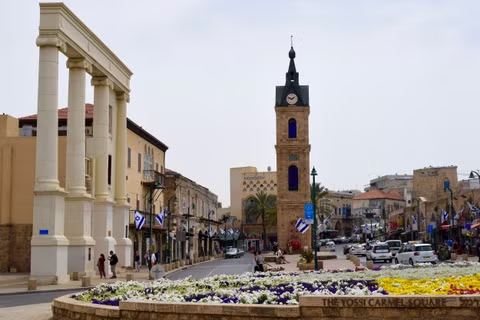
Historical walking tour of Jaffa
Tel Aviv
3 hours
A stroll through the history of Jaffa. We will see sites from a variety of time periods starting as far back as the Ancient Egyptian period through modern times. We will take breaks for photos and shopping.
FROM$120/ per group

Melissa P.
4.00 / 5
(1 reviews)

Monkey park & Bamboo grove
Kyoto
5 hours
Iwatayama monkey mountain has 50 years history, and many monkeys are feeded at the mountain plaza. You can buy treats and give them to monkeys directly. It will take 20 minutes to go up to the monkey plaza. After that, please walk around the Bamboo Grove, which is about 8 Acre space, and you will heal your physical body and spirits.
FROM$232/ per group

Eric T.
4.88 / 5
(52 reviews)
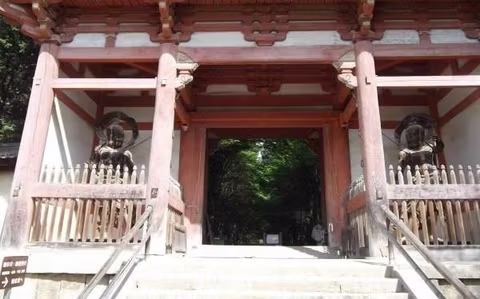
Tour of Daigo-ji Temple
Kyoto
4 hours
(Highlights) The origin of Daigo-ji Temple dates back to 874, when a student priest of Reverend "Kobo-daishi" acquired the mountain "Daigo-yama," which was then the sacred training ground for mountain-based ascetic priests, carved two Kannon Goddesses and placed the carvings on the top of the mountain. Afterward, under the protection of the three successive emperors, buildings were constructed one after another both in the upper and lower parts of the mountain. The temple served as the hub of the" Shingonsyu" Sect of Buddhism with the support of the Imperial family and feudal lords. Although it was destroyed by fires many times, the temple buildings were reconstructed after a ruler of Japan, Toyotomi Hideyoshi, held a cherry blossoms viewing party in 1598. In the Edo period, one of the temple buildings, "Sampoin hall," was designated as the head temple for those ascetic priests. Surviving the orders of "Separation of Shintoism and Buddhism" and "Abolition of mountain asceticism" after the Meiji Restoration, the temple has kept its teachings to this day under the efforts of successive head priests. (How to enjoy) You will be amazed at the harmony of man-made wooden structures, large and small, and the beautiful natural surroundings. The murmur of the small, pure stream will be soothing to you ears. The whole of the temple precincts will sevve you as the place for curing all your worldly worries and recharging your internal batteries. Sitting on the roadsides and enjoy having lunch may be a wonderful idea. (Others) Entrance fee is 600 yen for one segment of the temple compounds. Bus fare is 230 yen per one way from JR Yamashina station.
FROM$107/ per group

Tatsuhiro N.
4.56 / 5
(62 reviews)
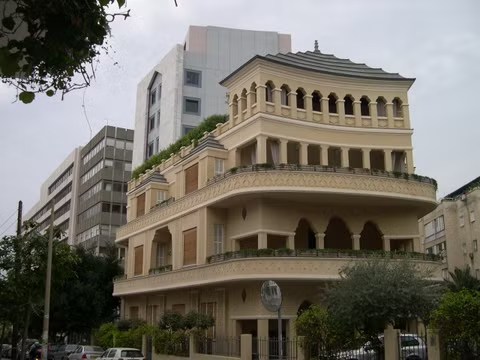
Solo-Traveler History of Tel Aviv walking tour
Tel Aviv
4 hours
We will take a stroll through the history of Tel Aviv mixed in with modern sky scrappers. We will see sites from the first neighborhood, the founding of the city, the beginning of the state of Israel and more. This is a walking tour, so please bring water, hats and sunscreen.
FROM$120/ per person

Melissa P.
4.00 / 5
(1 reviews)
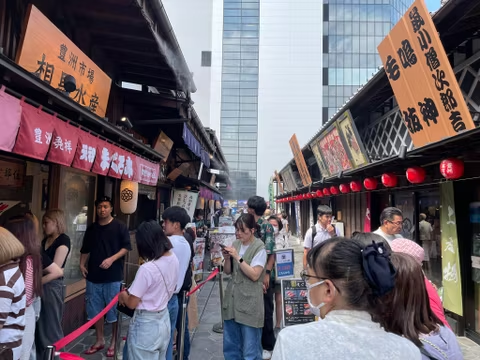
Food Tour of Toyosu Fish Market
Tokyo
3 hours 30 min
We will visit Tokyo Fish Market mainly for foods. The auctions finish in the early morning but you can see their displays and video of the auctions in this tour. There are many shops of processed foods for fish brokers and eating places for visitors.
FROM$140/ per group
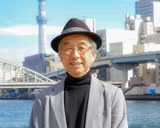
Yuki K.
4.78 / 5
(382 reviews)
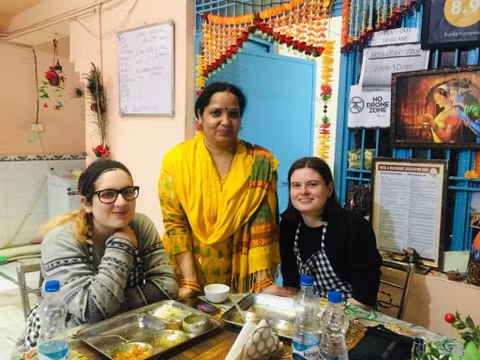
Local Food Tour With Cooking Classes in House Agra
Agra
2 hours 20 min
They Will Learn How to cook Indian Food and Help for cooking with Indian ladies after cooking they will do food tasting and have lunch or Dinner at the same place and food that they cook.
FROM$20/ per person

Abhishek S.
5.00 / 5
(2 reviews)
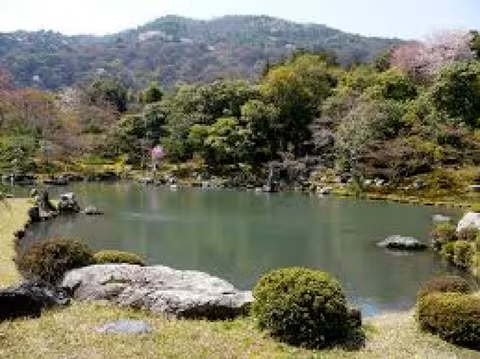
Walking around Arashiyama
Kyoto
5 hours
Arashiyama is Summer Villa Area of Emperors 1000 years ago. I wish to introduce some beautiful and attractive places in Arashiyama. Visiting places are adjacent then I wish to recommend you to visit each places on foot.
FROM$228/ per group

Eric T.
4.88 / 5
(52 reviews)
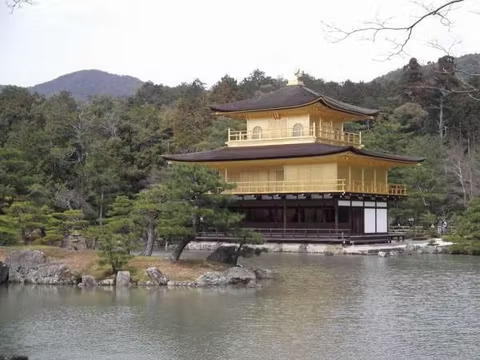
Tour of Kinkaku-ji Golden Pavilion
Kyoto
3 hours
(Highlights) Registered as the World Cultural Heritage Site in 1994, the temple, formally named "Rokuon-ji Temple", was originally built in 1397 by the third Shogun of the Muromachi period but was burnt down by a fire caused by a young Zen Buddhist student in 1950 and was rebuilt in 1955. The garden and buildings centered on the Golden Pavilion was said to represent the Pure Land of Buddha in this world. The temple also functioned as the official guest house. In 1987, gold foils were re-plated completely after one year and eight months of work. The golden structure forms a striking contrast to the water of the pond in front of it and the greenery surrounding the temple. As you walk on the path after viewing the temple, you will come across The "Sekka-tei (Place of Evening Beauty)" Tea House, where you can see the Golden Pavilion shining beautifully in the evening glow, and "Fudo-do" Temple hosing the stone statue of the Buddhist deity, "Fudo-myo-o." Yow will also find small stalls selling good-luck charms and small trinkets as well as souvenirs. (How to enjoy) Just walk on the pass leading to the Golden Pavilion and other buildings according to the instructions of a brochure you will be given after paying the admission at the gate. You can gaze at the magnificent golden structure and take its photos or ask someone for help to have your picture taken with the temple in the background. You can also enjoy drinking tea in the open-air garden near the "Sekka-tei" Tea House, or you can bask in the delicate aroma of burning incense at "Fudo-do" Temple. If you read the brochure, you can learn the history of the entire garden and the buildings. (Others) The bus fare is 230 yen and the admission fee is 600 yen.
FROM$107/ per group

Tatsuhiro N.
4.56 / 5
(62 reviews)
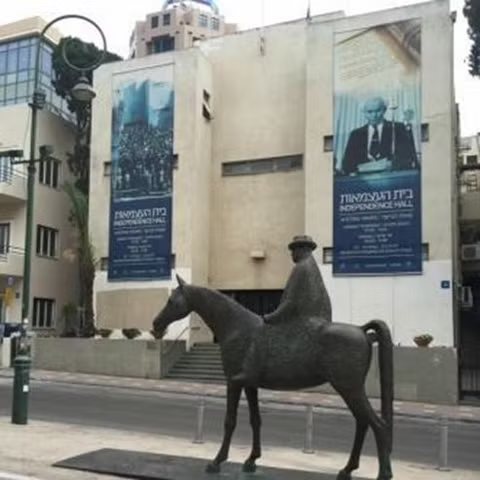
Historical tour including hostage square
Tel Aviv
4 hours
This tour is meant to be a meaningful experience based on the current situation, my personal experiences as well as Zionist history. This tour will cover some hard subjects.
FROM$160/ per group

Melissa P.
4.00 / 5
(1 reviews)
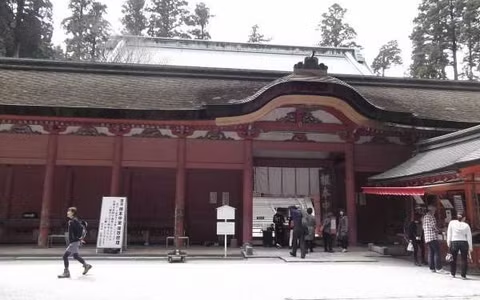
Tour of Hieizan Enryaku-ji Temple
Shiga
5 hours
(Highlights) More than 1,200 years have passed since the Reverend Dengyo-daishi Saicho settled in Mt. Hieizan. It is called the Mother Mountain of the Japanese Buddhist world, since it trained and gave birth to many noted priests like Honen, Eisai, Shinran, Dogen and Nichiren. Hieizan Enryaku-ji-Temple, registered in the World Cultural Heritage Sites list, consists of many magnificent buildings and lies on the top of Mt.Hiei which is some 800 meters high above the sea level. The temple precincts are made up of three districts: Toto (East district), Seito (West district) and Yokogawa district. The area is so wide and slopes are so steep that you have to be dressed in clothes for a mountain climbing and be ready for a hard physical exercise. However, once you are in the temple enclosure, you will be amazed at the dozens of magnificent buildings built with exquisite techniques. (How to enjoy) You can see the beautiful scenery from a cable car as it goes up the mountain. After reaching the temple area, enjoy having a look at the splendid structures and strolling on the paths. Especially at Konponchudo hall, you can immerse yourself in the mythical world of Buddhism. It is difficult to explain what the temple is all about in its entirety in this column; just visit and see. (Others) The JR train fare from Kyoto to Otsu is 240 yen and the Keihan Railway train fare from Hama-Otsu to Sakamoto is 240 yen. You have to walk about one kilometer from JR Otsu station to Keihan Railway Hama-Otsu station. The cable-car charge is 860 yen for one-way, 11-minute ride and the temple entrance fee is 700 yen.
FROM$143/ per group

Tatsuhiro N.
4.56 / 5
(62 reviews)
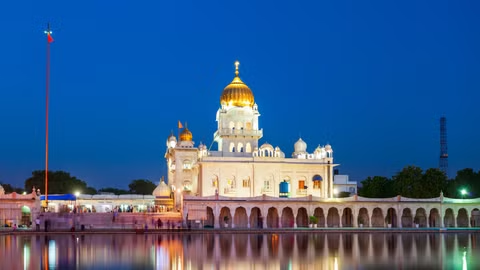
Delhi Evening And Nightlife Highlight Tour
Delhi
4 hours 30 min
Experience the vibrant nightlife of Delhi with our Evening and Nightlife Tour. Discover the city's electric atmosphere as it comes alive after sunset, offering a mix of entertainment, cultural experiences, and culinary delights. Join us for a memorable 4-hour journey through Delhi's bustling nightlife scene.
FROM$70/ per person

Abhishek S.
5.00 / 5
(2 reviews)
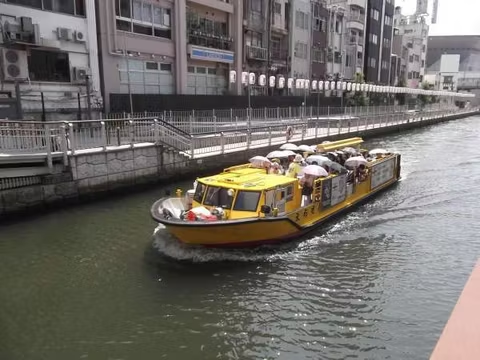
Tour of Osaka Dotombori
Osaka
4 hours
(Highlights) Dotombori is to Osaka what Gion is to Kyoto. The district is located in the area popularly called "Minami (south)", or south of Osaka city centering on Kintets` Railway Namba station, as compared with "Kita (north)", where JR Osaka station is the hub. On both sides of Dotombori river line business offices, shops, entertainment facilities and all sorts of restaurants and eateries. You can enjoy cruising the 20-minute river on board the yellow-colored boat, which is run two to third times an hour between 1 pm and 9 pm. (How to enjoy) Walk along the banks of Dotombori river, spend happy time on board the cruising boat while doing the sites on both sides, or enjoy eating or shopping in the area above the river bank. It would be better for you to be there in the evening in summer when the daytime heat subsides and cool wind prevails. There are many well-known places which have distinctive characteristics: Ebisubashi-suji shopping street, where many shops from Edo period line; Shinsaibashi-suji Shopping Street, where there are fashionable shops; Soemon-cho Shopping Street good for night life; Dotombori Shopping Street, otherwise called "Kuidaore-no-mahci, where you can spend all your money eating; Sennichi-mae Shopping Street; and Hozenji-yokocho Street, known for the mossed "Mizukake-fudoson" Buddha statue and for the long-running TV drams in former days. All these places are good for eating and walking. By the way, "suji" means a street running from north to south in Osaka. (Others) JR transportation fare from Kyoto to Osaka is 560 yen and the subway fare from Osaka to Namba, 240 yen. The fare for the cruise boat ride is 900 yen.
FROM$143/ per group

Tatsuhiro N.
4.56 / 5
(62 reviews)
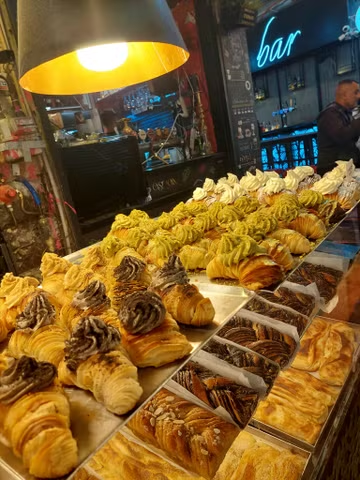
Solo-Traveler Taste of Israel Tour
Jerusalem
2 hours
We will do a few food and drink tastings at Machane Yehuda market and then go to the wine temple for a wine tasting. The food tasting will include local fruits, spices, teas and treats and the wine tasting will vary depending on which one you would like to do. The wine tastings are usually booked for 45 minutes and include 3-6 wines as well as an explanation about all of the wines, where they come from and how they are made.
FROM$60/ per person

Melissa P.
4.00 / 5
(1 reviews)

Heritage Walk And Village Tour Agra
Agra
3 hours
It is a newly explored by our travel company the village tour or heritage walk by the visitor in the rural area. Visitors will have a bicycle or walk to reach in the nearby village and then they may have to walk in a certain area. It is a new and extraordinary concept by us where the visitor will feel how the people survived or lived in the rural area it will be really incredible adventure walk tour of the real life of the Indian people in the rural area.
FROM$30/ per person

Abhishek S.
5.00 / 5
(2 reviews)

Tour of Osaka Tenjin-matsuri Festival / Cruising on the river
Osaka
4 hours
(Highlights) Held in the evening of July 25 each year, this festival attracts more than a million spectators. Dozens of rafts full of invited, kimono-clad people towed by small boats go upstream the major river in the heart of Osaka, while on-lookers watch from the river bank, nearby bridges and the pier. There stand stalls selling varieties of food, filling in every nook and corner of the river bank. Thousands of fireworks are shot up into the night sky to the great enjoyment of visitors. (Origin of the festival) The myth says that in the year 951, two years after God descended from heaven and settled in the Tenmangu Shrine, they flowed a sacred float in the river from the nearby beach and a funeral hall was built and "misogi" purification ceremony held at the shore where the float reached. Then, those living near the shrine and worshipers built a ship to contributed to the shrine. (How to enjoy) You can see rafts full of "yukata"-clad people in the festive mood on board slowly going upstream the river, while being soaked in the cool evening atmosphere. After dark, fireworks setting the skies ablaze make you sigh in joyful excitement. You can have whatever food you like at the stalls built in the riverbank. (Transportation) The JR train fare from Kyoto station to Osaka station is 560 yen and the subway fare, 180 yen. (Others) Since the venue is very crowded, please do your utmost in protecting yourself from being bumped by others and from theft. If you are there on the days other than the festival day, you can enjoy cruising on board a sightseeing ship called "Osaka water-bus" for a fee of 1,700 yen for one-hour ride. You can see the landscape of Osaka city from different angles as the ship sails along the river. Daytime only, however.
FROM$143/ per group

Tatsuhiro N.
4.56 / 5
(62 reviews)
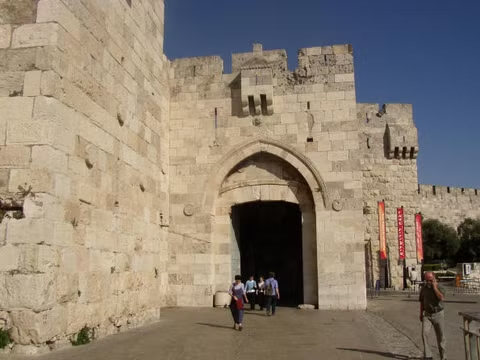
Solo-Traveler Old City Jerusalem Historical walking tour
Jerusalem
4 hours
We will do a tour that covers the highlights of the old city of Jerusalem. This will include religious and historical sties such as the kotel (western wall), Church of the holy Sepulcher, tower of david and a great over view of the temple mount.
FROM$120/ per person

Melissa P.
4.00 / 5
(1 reviews)
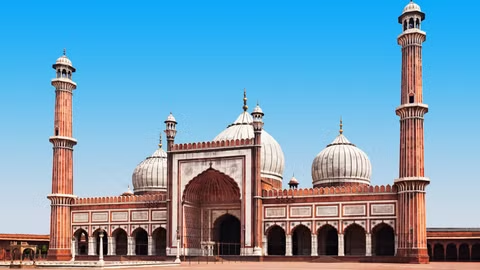
Half Day Old Delhi And Spice Market Walking Tour
Delhi
4 hours
Embark on a captivating journey through the historic lanes of Old Delhi with our Old Delhi Tour. Discover the rich cultural heritage, bustling markets, and iconic landmarks that make this part of the city so special. Get ready to immerse yourself in the sights, sounds, and flavors of Old Delhi.
FROM$60/ per person

Abhishek S.
5.00 / 5
(2 reviews)
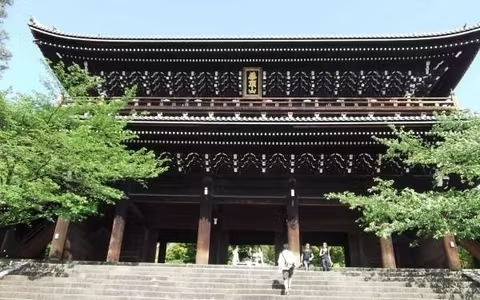
Tour of Chionin Temple
Kyoto
3 hours
(Highlights) Chionin Temple is the head temple of "Jodo (Pure Land) shinsyu" sect of Buddhism in Japan. In addition to the magnificent buildings in the precincts, it is famous for the two main features: one is "uguisu-bari" flooring technique which helped thwart the attempts by robbers to steal by emitting a sound somewhat resembling the note of a "uguisu" bush warbler as they walked and the other is the largest bell in Japan measuring 2.4 meters in diameter, 5.1 meters in height, 23.8 centimeters in thickness and weighing 74 tons. The temple buildings stand in the midst of trees on the height that can overlook the cityscape of Kyoto below. But before reaching the main hall, "Goeido", you have to go up the steep stone stairways which, in turn, enables you to take a good exercise. (How to enjoy) Just walk in the temple compound, get into the main hall and listen to the priests preach. Just see the marvelous technique utilized in the construction of the floor of corridors which is said to be the work of a noted sculptor of the late 16th century, Hidadi (left-handed) Jingoro, and see for yourself if the planking sounds like the chirping of a bush warbler as you walk. Just have a look at and wonder at the huge temple bell. (Others) The bus fare is 230 yen and the entrance fee is 800 yen. However, the main hall, "Goeido", is now under the extensive repair work which is estimated to take some four years (as of April, 2015).
FROM$107/ per group

Tatsuhiro N.
4.56 / 5
(62 reviews)